2,6-DICHLORO-1,4-PHENYLENEDIAMINE
- CAS NO.:609-20-1
- Empirical Formula: C6H6Cl2N2
- Molecular Weight: 177.03
- MDL number: MFCD00025369
- EINECS: 210-184-6
- SAFETY DATA SHEET (SDS)
- Update Date: 2024-12-18 14:07:02
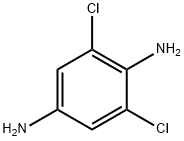
What is 2,6-DICHLORO-1,4-PHENYLENEDIAMINE?
Chemical properties
grey powder
The Uses of 2,6-DICHLORO-1,4-PHENYLENEDIAMINE
2,6-Dichloro-1,4-phenylenediamine is an aromatic amine that can be found in azo dyes. It was studied for potential mutagenic and toxic properties.
The Uses of 2,6-DICHLORO-1,4-PHENYLENEDIAMINE
The compound has been used as an intermediate for dyes, to some extent in preparing certain polyamide fibers, and as a curing agent for polyurethane.
Preparation
The chromophore Preparation: Will 2,6-Dichioro-4-nitroaniline reduction.
Definition
ChEBI: 2,6-Dichloro-para-phenylenediamine is a dichlorobenzene.
What are the applications of Application
2,6-Dichloro-p-phenylenediamine is a useful biochemical for proteomics research
Production Methods
2,6-Dichloro-p-PDA is not currently produced in the United States; the sole manufacturer ceased production in 1978. It is a chemical intermediate used as a polyurethane curative, and as a monomer in the manufacture of polyamide fiber.
General Description
Gray, microcrystalline powder or solid.
Air & Water Reactions
2,6-DICHLORO-1,4-PHENYLENEDIAMINE may be unstable to prolonged exposure to air and light. . Insoluble in water.
Reactivity Profile
2,6-DICHLORO-1,4-PHENYLENEDIAMINE neutralizes acids in exothermic reactions. May be incompatible with isocyanates, halogenated organics, peroxides, phenols (acidic), epoxides, anhydrides, and acid halides. May generate flammable gaseous hydrogen in combination with strong reducing agents, such as hydrides.
Health Hazard
ACUTE/CHRONIC HAZARDS: When 2,6-DICHLORO-1,4-PHENYLENEDIAMINE is heated to decomposition it emits very toxic fumes of chlorine and nitrogen oxides.
Fire Hazard
Flash point data for 2,6-DICHLORO-1,4-PHENYLENEDIAMINE are not available; however, 2,6-DICHLORO-1,4-PHENYLENEDIAMINE is probably combustible.
Properties of 2,6-DICHLORO-1,4-PHENYLENEDIAMINE
| Melting point: | 122-127 °C |
| Boiling point: | 291.88°C (rough estimate) |
| Density | 1.4668 (rough estimate) |
| refractive index | 1.6400 (estimate) |
| storage temp. | -20°C |
| solubility | Chloroform (Slightly), Methanol (Slightly) |
| pka | 3.74±0.10(Predicted) |
| form | Solid |
| color | Pale Brown to Light Brown |
| Stability: | Stable. Incompatible with strong oxidizing agents. |
| IARC | 3 (Vol. 39, Sup 7) 1987 |
| EPA Substance Registry System | 2,6-Dichloro-p-phenylenediamine (609-20-1) |
Safety information for 2,6-DICHLORO-1,4-PHENYLENEDIAMINE
| Signal word | Danger |
| Pictogram(s) |
 Exclamation Mark Irritant GHS07  Health Hazard GHS08 |
| GHS Hazard Statements |
H302:Acute toxicity,oral H319:Serious eye damage/eye irritation H334:Sensitisation, respiratory H351:Carcinogenicity |
| Precautionary Statement Codes |
P260:Do not breathe dust/fume/gas/mist/vapours/spray. P280:Wear protective gloves/protective clothing/eye protection/face protection. P312:Call a POISON CENTER or doctor/physician if you feel unwell. |
Computed Descriptors for 2,6-DICHLORO-1,4-PHENYLENEDIAMINE
New Products
Tert-butyl bis(2-chloroethyl)carbamate (S)-3-Aminobutanenitrile hydrochloride N-Boc-D-alaninol N-BOC-D/L-ALANINOL N-octanoyl benzotriazole 4-Hydrazinobenzoic acid 3,4-Dibenzyloxybenzaldehyde 1,1’-CARBONYLDIIMIDAZOLE R-2-BENZYLOXY PROPIONIC ACID 1,1’-CARBONYLDI (1,2-4 TRIAZOLE) 4-HYDROXY BENZYL ALCOHOL 3-NITRO-2-METHYL ANILINE (2-Hydroxyphenyl)acetonitrile 4-Bromopyrazole 5-BROMO-2CYANO PYRIDINE 5,6-Dimethoxyindanone 5-broMo-2-chloro-N-cyclopentylpyriMidin-4-aMine 4-methoxy-3,5-dinitropyridine 2-(Cyanocyclohexyl)acetic acid 2-aminopropyl benzoate hydrochloride 1-(4-(aminomethyl)benzyl)urea hydrochloride tert-butyl 4- (ureidomethyl)benzylcarbamate diethyl 2-(2-((tertbutoxycarbonyl)amino) ethyl)malonate Ethyl-2-chloro((4-methoxyphenyl)hydrazono)acetateRelated products of tetrahydrofuran
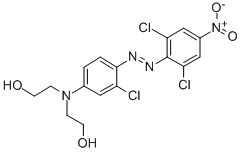
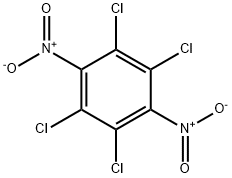

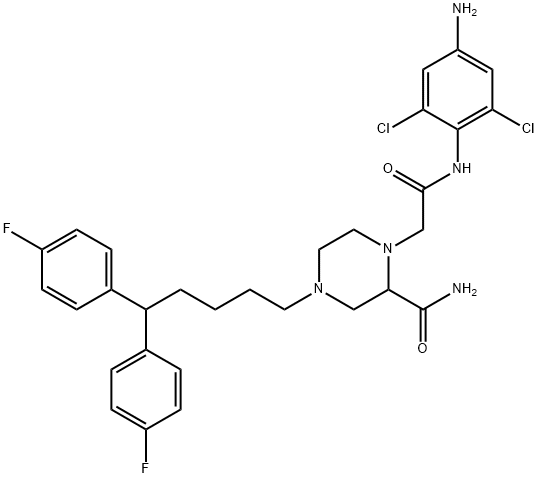
![4-[4-[(2,6-dichloro-4-nitrophenyl)azo]phenyl]thiomorpholine 1,1-dioxide](https://img.chemicalbook.in/CAS/GIF/17741-62-7.gif)
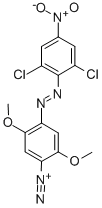
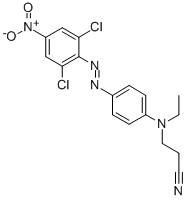

You may like
-
 873-83-6 6-Aminouracil (or) 4-Amino-2,6- dihydroxypyrimidine, (or) 6-Amino2,4-pyrimidinediol 99%View Details
873-83-6 6-Aminouracil (or) 4-Amino-2,6- dihydroxypyrimidine, (or) 6-Amino2,4-pyrimidinediol 99%View Details
873-83-6 -
 55441-95-7 99%View Details
55441-95-7 99%View Details
55441-95-7 -
 N-Vinylformamide 99%View Details
N-Vinylformamide 99%View Details
13162-05-5 -
 Chloro Uracil 1820-81-1 99%View Details
Chloro Uracil 1820-81-1 99%View Details
1820-81-1 -
 207557-35-5 99%View Details
207557-35-5 99%View Details
207557-35-5 -
 2-ethyl-6-methyl-3-hydroxypyridine succinate 99%View Details
2-ethyl-6-methyl-3-hydroxypyridine succinate 99%View Details
127464-43-1 -
 2-ETHYLPYRIDINE 100-71-0 99%View Details
2-ETHYLPYRIDINE 100-71-0 99%View Details
100-71-0 -
 181228-33-1 (S)-Methyl 3-amino-2-((tert-butoxycarbonyl)amino)propanote Hydrochloride (DAP-OMe. HCl) 99%View Details
181228-33-1 (S)-Methyl 3-amino-2-((tert-butoxycarbonyl)amino)propanote Hydrochloride (DAP-OMe. HCl) 99%View Details
181228-33-1